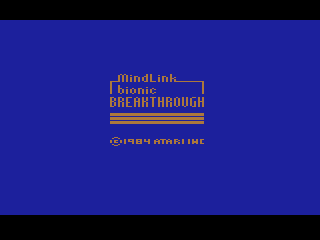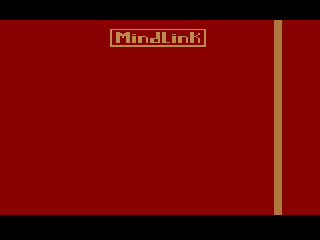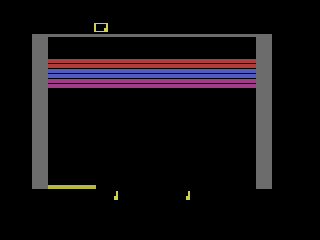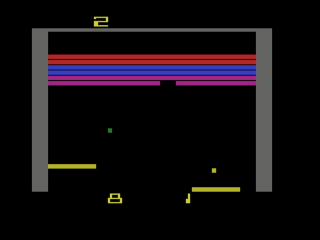|
|
Bionic Breakthrough
|
Name:
|
Bionic Breakthrough |
 |
| Company: | Atari | |
|
Model #:
|
N/A | |
|
Programmer:
|
Paul Donaldson | |
| Year: | 1984 | |
|
Released?
|
No
|
|
|
Notes:
|
One of three games written specifically for the MindLink |
Back in the mid 80's Atari was on top on the video gaming world, so they had alot of money to sink into product development. Atari experimented with all kinds of strange controllers and systems that never made it to production, the MindLink was one of those controllers. The MindLink was a headband that player wore on his head and plugged into the joystick port. The idea was that the MindLink's sensors would pick up any facial movements or muscle twitches the player would make. Atari actually said that the MindLink read the player's thoughts (sure it did...). The problem was that the MindLink didn't work very well in initial test runs, and even when it did work players would complain of headaches and dizziness from twitching their face all day. A cute idea, but ultimately a failed one.

Bionic Breakthrough was one of only two games written to be used with the MindLink controller. While the title may conjure up images of some grand new game, Bionic Breakthrough is really just a modified version of Super Breakout made to work with the MindLink controller. Before the game starts there is a screen where the word "MindLink" slowly scrolls to the bottom, this is for calibrating the MindLink controller. On this screen the player can move the text block left and right to make sure the MindLink is working properly. If the player moves the logo to the left side of the screen it will scroll up, if they move it to the right side it will scroll down. If the player moves the logo into the bar on the right side of the screen it will disappear. Interestingly the game also has a calibration option that can be triggered in-game. If the player moves the paddle very far to the right it will change color of the paddle to red indicating that the recalibration is about to triggered. After that the game updates the sensitivity of the paddle and changes the left and right walls to blue, green, or orange to indicate that the paddle has been recalibrated. The color indicates how much the sensitivity of the paddle has been changed. Once the controller has properly calibrated, the player is presented with a special version of Super Breakout.

While mostly the same, this specially modified version of Super Breakout has a few changes. The first and most noticeable change is that the font has been redesigned so it's much thinner and sleeker looking. Secondly, the game variation number and ball number have been moved to the bottom of the screen. This allows the game to display the second players score on the right side of the screen instead of being in the same spot as the first player. Next, the paddle has been made longer so it is easier to play the game with the MindLink (you can still make the paddle smaller with the difficulty switches however). Finally, and most interesting of all, this version introduces two new 'Cooperative' game variations which replace the two Children's variations (8 and 9). These new variations are similar to the one player Doubles and Cavity variations from the original but have a second paddle that the second player controls. Balls can bounce off this paddle from the top, but will pass through it from underneath so the ball doesn't immediately get bounced off the screen.
Atari was known for being an innovator in video games, but you've got to wonder who thought that this was a good idea. Why would players want to sit and look like they're having a facial spasm, when they could just use a normal joystick instead? Maybe the allure of being able to drink a Coke or scratch yourself while playing a game clouded their judgement? Either way, the MindLink will go down in history as one of the strangest controllers ever developed.
| Version | Cart Text | Description |
| ?-??-84 | Early version? | |
| 6-22-84 | Mind Link 6-22 | Later version? |

